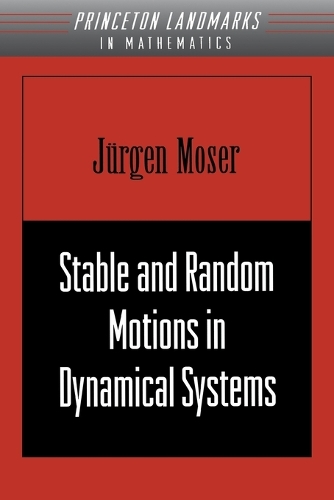
Stable and Random Motions in Dynamical Systems: With Special Emphasis on Celestial Mechanics (AM-77)
(Paperback, Revised edition)
Publishing Details
Stable and Random Motions in Dynamical Systems: With Special Emphasis on Celestial Mechanics (AM-77)
By (Author) Jurgen Moser
Princeton University Press
Princeton University Press
16th July 2001
Revised edition
United States
Classifications
Professional and Scholarly
Non Fiction
Differential calculus and equations
515.352
Physical Properties
Paperback
216
Width 152mm, Height 235mm
340g
Description
For centuries, astronomers have been interested in the motions of the planets and in methods to calculate their orbits. Since Newton, mathematicians have been fascinated by the related N-body problem. They seek to find solutions to the equations of motion for N mass points interacting with an inverse-square-law force, and to determine whether there are quasi-periodic orbits or not. Attempts to answer such questions have led to the techniques of nonlinear dynamics and chaos theory. In this book, a classic work of modern applied mathematics, Jurgen Moser presents a succinct account of two pillars of the theory: stable and chaotic behavior. He discusses cases in which N-body motions are stable, covering topics such as Hamiltonian systems, the (Moser) twist theorem, and aspects of Kolmogorov-Arnold-Moser theory. He then explores chaotic orbits, exemplified in a restricted 3-body problem, and describes the existence and importance of homoclinic points. This book is indispensable for mathematicians, physicists, and astronomers interested in the dynamics of few- and many-body systems and in fundamental ideas and methods for their analysis. After thirty years, Moser's lectures are still one of the best entrees to the fascinating worlds of order and chaos in dynamics.
Author Bio
Daniel M. Kammen is Associate Professor of Energy and Society and director of the Renewable and Appropriate Energy Laboratory at the University of California, Berkeley. David M. Hassenzahl is Assistant Professor of Environmental Studies at the University of Nevada, Las Vegas. He has been an environmental risk professional in both the public and private sectors. Jurgen Moser, who died in 1999, was one of the most influential mathematicians of his generation. He made key contributions in dynamical systems and nonlinear analysis and was Director of the NYU Courant Institute, Director of the Research Institute for Mathematics at Switzerland's Federal Institute of Technology, and President of the International Mathematical Union. He received the 1994/95 Wolf Prize.
